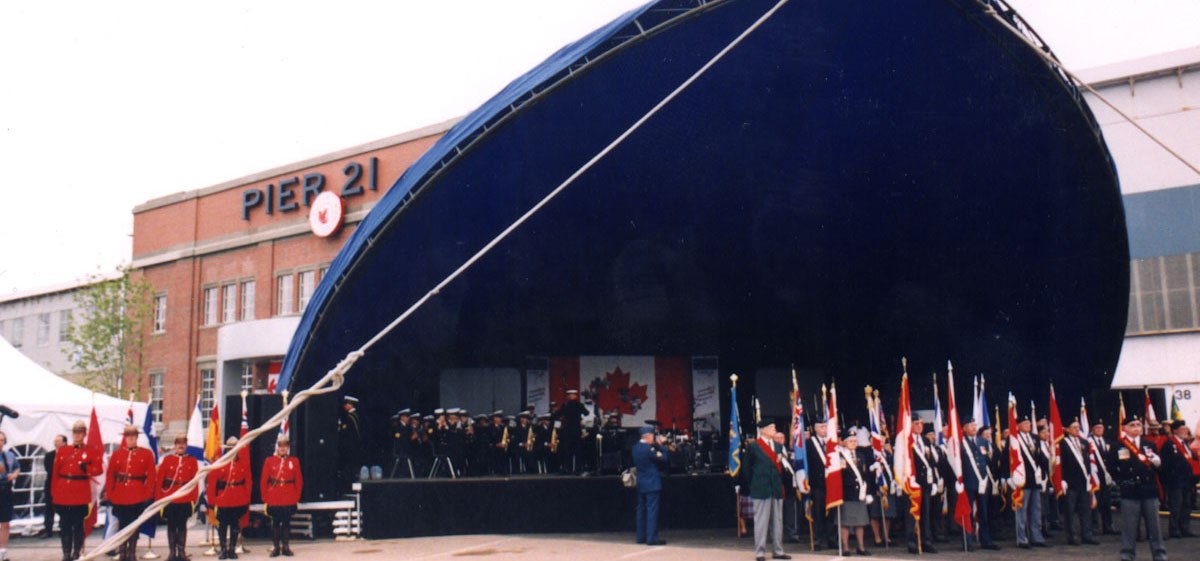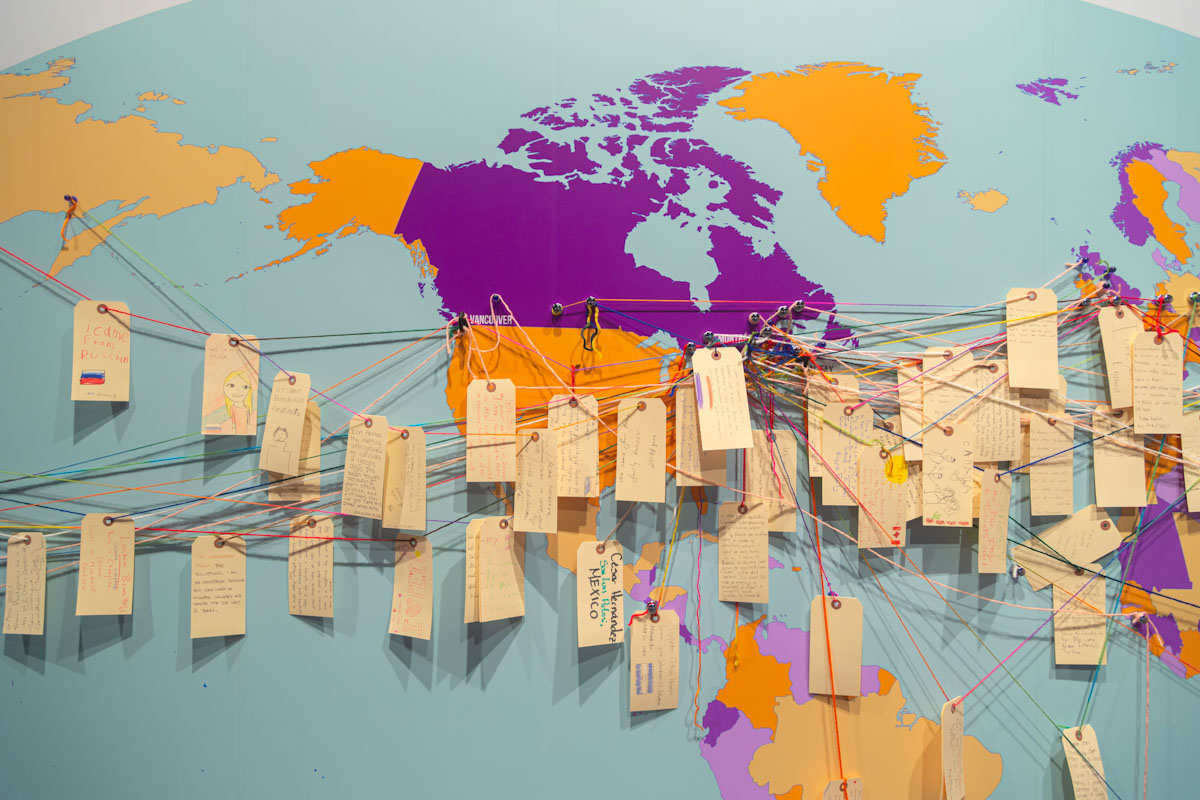
July 1 of this year marked a special anniversary: 25 years since our building first re-opened its doors as a museum.
Pier 21 served as a gateway to Canada from 1928 to 1971. Nearly a million people arrived through the building, disembarking from passenger ships on their way to new lives all over the country.
In the 1980s and 90s a group of dedicated volunteers, including founder JP LeBlanc and later Ruth Goldbloom OC, believed that Pier 21, one of Canada’s last standing immigration sheds, had a history worth preserving and sharing.
Opening Day
On July 1, 1999, the front doors of Pier 21 were once again open to the public. The day began with the help of the Royal Canadian Navy who escorted a group of War Brides down the harbour on the HMCS Preserver, to disembark more than 50 years after their original trans-Atlantic crossing at Pier 21. Hosted by CBC personality and Pier 21 alumnus Hanna Gartner, the opening ceremony honoured the main groups who once passed through Pier 21; an immigrant, a refugee (more commonly referred to as a Displaced Person at the time), a Veteran, a War Bride and a British Evacuee Child.
The CBC set design team in Halifax built a puzzle in the shape of the Canadian flag for the event. Each representative came to the stage one by one and placed their missing piece in the puzzle. This “prop”, created to mark our opening, still graces our stage in the Kenneth C. Rowe hall a quarter century later.
What has changed
Early on, various people referred to Pier 21 as “Canada’s Ellis Island”. This comparison to New York’s famed port of immigrant arrival helped people quickly understand something about the building’s history.
But there was pushback too. Some said that where Ellis Island was grand in its design and construction, Pier 21 was more modest. More…Canadian. Others protested that we shouldn’t ever define ourselves in American terms.
Now, Pier 21, as a national historic site, has its own distinct identity. It continues to attract visitors from across Canada and around the world.
The most significant change to the Museum occurred in 2011 when it was designated as Canada’s national immigration museum. Our name changed but also our purpose. Now, in addition to telling the story of immigrants who arrived through the building, we also tell the larger 400+ year story of immigration to this land, from first contact with Indigenous peoples to the very recent past.

What hasn’t changed
Several traditions were begun on our opening day. On every Canada Day since 1999 (except during COVID-19 lockdowns), the Museum has opened to the public free of charge, with special programming and celebrations on offer.
Twenty-five years ago, a citizenship ceremony was a core part of the event, another continuing tradition. Becoming a Canadian citizen is a huge milestone in the immigration process. Including this ceremony in our Canada Day celebration is very important to us.
Fascinating Canadians:
The Museum’s signature fundraising event is the Fascinating Canadian speaker series. These are prominent Canadians who share their personal stories of immigration. The first “unofficial” Fascinating Canadian, now-retired Supreme Court of Canada Justice Rosalie Silberman Abella. Spoke on the eve of the Museum’s opening in 1999: Telling her family’s story of survival of the Holocaust and their journey to Canada, she said:
“This country is full of tenaciously grateful immigrants and their descendants who bloomed in Canada’s field of opportunities, nourished by its generosity and strengthened by its idealism. This triumphal triumvirate of opportunity, generosity and idealism is what this Pier stands for: Canada’s best self. It is the Canada that let us in, the Canada that took one generation’s European horror story and turned it into another generation’s Canadian fairy tale.”
As we look forward to Canada’s future, may we aspire to be our best self as a country.